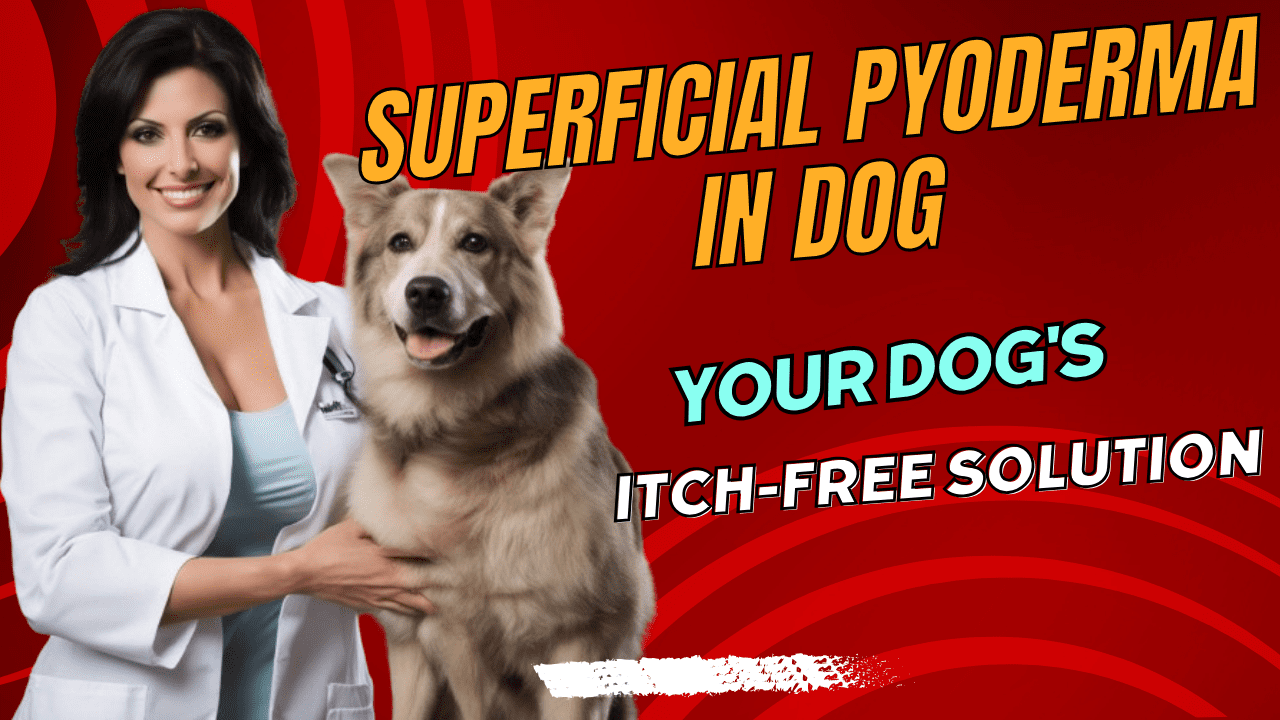Man’s best friend, our beloved dogs, are susceptible to various health issues, and one common dermatological concern is superficial pyoderma in dog. This skin condition can affect dogs of all breeds and sizes, causing discomfort and concern for pet owners. In this blog post, we’ll delve into the depths of superficial pyoderma, exploring its causes, symptoms, and treatment options.

Understanding Superficial Pyoderma in Dog:
Superficial pyoderma is a bacterial skin infection that primarily affects the outer layers of a dog’s skin. It is often characterized by the presence of pustules, papules, and crusts. The condition is typically caused by bacteria, with Staphylococcus pseudintermedius being a common culprit. While it can affect any dog, certain breeds, especially those with skin folds or allergies, may be more prone to developing superficial pyoderma.
Causes of Superficial Pyoderma:
- Bacterial Overgrowth: The most common cause of superficial pyoderma is the overgrowth of bacteria on the skin, often due to a weakened immune system.
- Allergies: Dogs with allergies, whether food-related or environmental, are more susceptible to skin infections, including superficial pyoderma.
- Skin Folds: Breeds with skin folds, such as Bulldogs and Shar-Peis, are at a higher risk because these folds can create a warm, moist environment ideal for bacterial growth.
- Trauma or Injury: Cuts, scratches, or other skin injuries can provide an entry point for bacteria, leading to infection.
Symptoms of Superficial Pyoderma in Dog:
Identifying the symptoms of superficial pyoderma is crucial for early detection and effective treatment. Common signs include:
- Redness and Inflammation: Inflammation and redness may manifest in the affected area, leading to a reddened and swollen appearance.
- Pustules and Papules: Small, pus-filled bumps or raised lesions may be present on the skin.
- Itching and Discomfort: Dogs with superficial pyoderma often exhibit signs of itching, scratching, or licking the affected area.
- Hair Loss: Infected areas may experience hair loss, leaving behind bald patches.
- Crusts and Scabs: As the condition progresses, the skin may develop crusts, scabs, or oozing lesions.
Treatment Options:
The treatment of superficial pyoderma involves a multifaceted approach:
- Antibacterial Medications: Veterinarians may prescribe antibiotics to eliminate the bacterial infection.
- Topical Treatments: Medicated shampoos, creams, or sprays can be applied to the affected area to help control bacterial growth.
- Addressing Underlying Causes: Identifying and addressing the underlying cause, such as allergies, is crucial to preventing recurrent infections.
- Good Hygiene Practices: Regular bathing and grooming, especially in breeds prone to skin folds, can help prevent bacterial overgrowth.
- Dietary Changes: In cases where food allergies are implicated, switching to a hypoallergenic diet may be recommended.
Superficial pyoderma is a common yet manageable skin condition in dogs. Timely veterinary intervention, proper hygiene, and addressing underlying causes can go a long way in ensuring the well-being of our furry friends. If you notice any signs of superficial pyoderma in your dog, consult with your veterinarian promptly to initiate appropriate treatment and prevent the condition from progressing.
Read More: https://drcmpetclinic.com/2023/12/29/moist-dermatitis-demystified-happy-healthy-pups-await/

